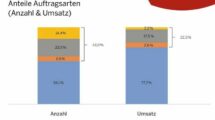Ordering by Telephone/continued
Leaving messages
Make clear who is calling. Give your full name, company and title: “Hello, this is Annette Braun, marketing manager at Deutsche Bank in Frankfurt“. Say your name slowly and clearly. If you are not sure you are through to the right person’s voice mail, you can start with: “This is a message for…“.
Always give the time and date. Most voice mail or answerphone (US: answering machine) systems automatically tell the receiver when the message came in, but it is better to be safe than sorry.
Be careful when giving the time. For British people, “half ten“ is 10.30, not 9.30. Therefore, always say the time in full: “ten thirty“, “eleven forty five“, and so on. If there is likely to be any confusion between morning and afternoon, make this clear: “It’s seven o’clock in the morning.“ If you are phoning to another time zone, make clear whether it is “eight o’clock in the morning your time“ or “eight o’clock in the morning our time“.
Give the weekday and the date. This is spoken “Monday the 20th of November“ in British English, although we don’t write “the“ or “of“. In American English, it is pronounced “November (the) 20th“.
Say why you are calling. Note the little word “just“. This does not mean that your call is unimpor-tant; instead, it helps to create a friendly atmosphere. For example, you can say: “I’m just call-ing about…“; “I’m just calling to discuss…“ (not: discuss about); “I’m just calling to let you know…“.
Say what the other person should do. Do you want them to “call back“/“get back“ to you? If not, you can say: “I’ll try again later“. Or you can simply leave a message: “I just wanted to let you know that the goods are ready. There’s no need to call back.“
Give your phone number clearly. One of the most biggest problems with phone messages is that people often give their own number too quickly or not clearly enough, forcing the receiver to listen to the whole message again. Your phone number is often the most important piece of information, so get it right first time. Even if you think the other person already has your number, give it again. Say your number once slowly, and then repeat it even more slowly. Say each number separately: “eight-eight-eight-seven“ etc; never combine numbers (“eighty-eight“, “eighty-seven“ etc). The number “0“ ist pronounced “oh“ or “zero“. Remember also that a Handy is a “mobile (phone)“ in British English and a “cell phone“ in American English.
Thank you and goodbye. Thanking the other person makes a good impression, as does saying, “(I) look forward to hearing from you“. This also helps to create gentle ending, rather than simply an abrupt “goodbye“.
You also need a clear message on your own voice mail or answerphone. Here is one simple example: “Hello, this is Peter Müller (or: You’re through to Peter Müller) in the sales department of … . I’m sorry I can’t take your call at the moment. But please leave a message, and I’ll call you back as soon as possible. Thank you.“
If you want a shorter version, you could say: “Peter Müller. Please leave a message, and I’ll get back to you as soon as possible. Thank you.“ If you are going to be out of the office for a longer period, you might record a message like this one: “Hello, this is Peter Müller. I’m out of the office until the 15th of November. If it’s urgent, please call my colleague/deputy/secretary Angela Hoch on extension 247. Thank you.“
Finally, never delete a message until you have successfully called the person back. Otherwise, if you have written their phone number down wrongly, you will have no record of the correct number.
adapted from: www.businessenglish.de/phone.htm, chapter 2 (from Junge Karriere)
Questions and Exercises:
- 18. Is time telling on you? Which of the following answers is/are correct?
- 1) 3.00 p. m.
- a) three o´clock
- b) three p. m.
- c) three o´clock in the morning
2) 4 in the morning
- a) four o´clock a. m.
- b) four in the morning
- c) four p. m.
3) 9.45
- a) nine forty five
- b) quarter to ten
- c) quarter before ten
4) 10.13
- a) ten thirteen
- b) ten o´clock thirteen
- c) thirteen minutes past ten
5) 13.00
- a) thirteen hundred hours
- b) one in the afternoon
- c) one p. m.
6) 12.30 in the morning
- a) half one
- b) half past twelve
- c) half twelve
7) 17.15
- a) seventeen fifteen
- b) quarter past seventeen
- c) five fifteen p. m.
- d) seventeen hours fifteen
- e) quarter past five
- f) quarter after five
- 19. The date: 5/3/03 or 3/5/03? Can you write the date correctly?
- 1. How do you write 5/11/02 in the U.K.?
- 2. How do you write 7/4 in the States?
- 3. How do you write 3/12/73 in Australia?
- 4. How do you write September 22 in Britain?
- 5. How do you write 5/11 in the United States?
- 6. How do you write 1/1/2004 all over the world?
- 7. How do you say 1st May?
- 8. How do you write 7/4 in the U.K.?
- 9. How do you say 25/8?
- 10. What date is Christmas eve?
When do English speakers cele-brate Christmas?
- 11. A very special day for American children is Halloween. Do you know when it takes place?
- 12. What date is New Year´s Day?
(see table at the right)
Examples: Can you tell me what/where/when ….
Do you know what/where/when ….
Fill in the correct one!
- a) She´s the person …………… plays the radio all day.
- b) This is the computer ……………. doesn´t work.
- c) This is the place …………………. I normally eat.
- d) He´s the young man ………….. (red hair)
- e) She´s got the computer …………… . (big screen)
Teilen:














